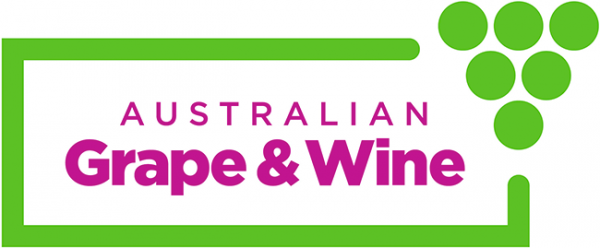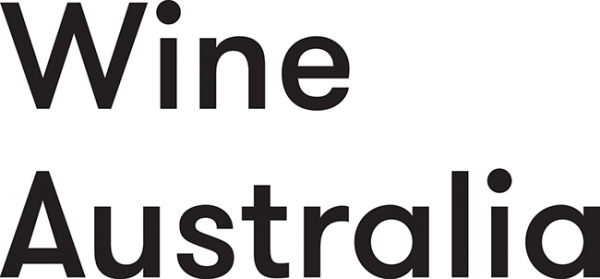Welcome to ‘Grower, Maker, Researcher - Wine Industry Insights’ – a podcast from the Australian Society of Viticulture & Oenology, funded by Wine Australia through the Extension and Adoption program.
The podcasts take a very practical approach, talking to practitioners and researchers about current best practice and what changes to expect in the near future.
Hear from highly regarded growers winemakers and researchers in the Australian wine industry as they discuss best practice.
Subscribe now via your favourite podcast app or listen to individual episodes listed below.
 |
Building Expertise and Career Pathways in Wine with WSET Education
This episode explores how WSET (Wine & Spirit Education Trust) training delivered in partnership with ASVO can enhance knowledge, skills, and career opportunities in the wine industry. We discuss the course structure, key learning outcomes, and why formal wine education is a valuable investment for early-career professionals, while also providing targeted professional development for cellar door staff. Plus, we share a special offer for ASVO and Rootling members and highlight our face-to-face sessions in Orange in November 2025.
Towards more accurate detection and monitoring of grey mould
This podcast focuses on the latest developments around detection and monitoring of grey mould. Detection of grey mould of grapes is problematic as the fungus is often hidden from sight within the interior of the grape bunch.
Professor Chris Steele discusses the limitations of visual assessment for grey mould and shares results on alternative methods which provide quantification of the fungus
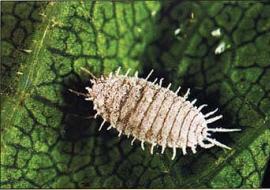
Control of Scale and Mealy bugs
This podcast discusses the widespread and increasing problem of scale and mealy bugs in vineyards. Guests Dr Linda Thomson from the pest & environmental adaptation research group at the University of Melbourne and viticulturist, and Jenny Venus from brad case contracting share information on why these insects are a concern to winegrape growers, and discuss how to spot the problem early, and effective control measures.
Mitigation of smoke affected grapes
This episode of Grower, Maker, Researcher discusses managing bushfire events and the mitigating the impact of smoke on grapes and wine. This episode is a continuation of our previous chat on understanding smoke taint. Our guests, Professor Kerry Wilkinson, Dr Julie Culbert and winemaker Alex Cassegrain, focus on best practices for mitigating the effects of smoke taint.
This episode is a collaboration between The University of Adelaide, Waite Research Institute and ASVO.
Managing bushfire events and the impact of smoke on grapes and wine
This episode of Grower, Maker, Researcher discusses the decisions wine growers need to make after smoke exposure of a vineyard. The guests in this episode are Professor Kerry Wilkinson, Dr Julie Culbert and winemaker Alex Cassegrain, and explores tried and tested options to reduce the risk of smoke tainted wine. This podcast is a collaboration between The University of Adelaide, Waite Research Institute and ASVO.
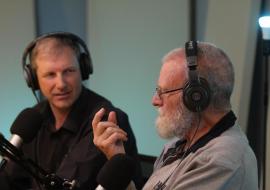
Managing vineyards damaged by fire
How should you manage a vineyard that has been directly damaged by fire, and what is the best way to return the vines to productivity? Colin Hinze of Pinion Advisory and Richard Hamilton of Hamilton Viticulture discuss the results of their three-year field trial in the Adelaide Hills.
The project was delivered by Wine Australia in partnership with the Department of Primary Industries and Regions. It is a Local Economic Recovery project, which is jointly funded by the South Australian and Australian Governments under the National Disaster Recovery Funding Arrangements.
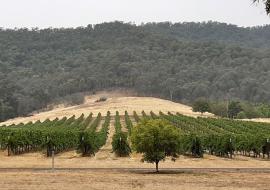
Early warning of smoke taint risk
Early warning of smoke taint risk North-East Victoria is one of the most bushfire-prone wine regions in Australia. It is now home to the world’s first smoke sensor network which is dedicated to monitoring smoke taint risk in vineyards. The network builds on over 10 years of research by Ian Porter of La Trobe University, which links smoke measurements to smoke taint risk for grapes and wine. Dean Cleave-Smith, of the King Valley, says it is a game-changer for the industry. This was a project funded by the Federal and Victorian Governments through a Regional Economic Stimulus and Resilience Grant awarded to the North-East Wine Zone following the 2019-20 bushfires, in partnership with Wines of the King Valley, La Trobe University and Wine Australia.
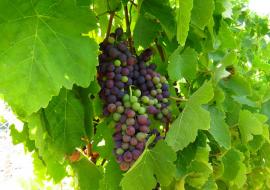
Managing grape maturity variability
Unsynchronised berry ripening results in significant proportions of under-ripe and overripe fruit remaining at the time of harvest, which is known to be detrimental to Australian red wine quality. In this podcast, we will discuss management systems that have potential to modulate grape maturity variability at the time of harvest, as well as the effects on red wine flavour and aroma profiles. On the episode, we will have viticulturist, Pete Balnaves from Balnaves of Coonawarra, and PhD student, Claire Armstrong from The University of Adelaide, and Dr David Jeffery, Associate Professor in Wine Science, The University of Adelaide, to give the wine industry’s and researcher’s experience with managing grape maturity variability.
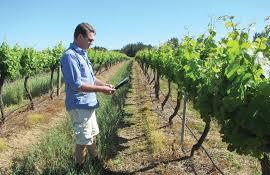
Yield assessment
This podcasts look at yield assessment a topics close to the heart of many growers and winemakers because getting it right delivers great benefits – and the costs of getting them wrong can be huge. This information would allow growers to make accurate yield assessments based on five-year historical averages, and also to be a step ahead when non-human-based yield assessment systems are improved as they are expected to draw on accurate historical information.Louisa Rose, Chief Winemaker at Yalumba Family Winemakers and Dr Mark Whitty, Senior Lecturer in Mechatronics at the University of New South Wales.

Optimising irrigation
The podcasts looks at irrigation efficiency and explains the importance of system maintenance and how using data from weather stations, soil moisture probes or plant sensors can reduce water use by 40–75 per cent without affecting yield or quality.
Kristy Bartrop, Viticulture Technical Manager at Casella Family Brands and Dr Vinay Pagay, Senior Lecturer in Viticulture at the University of Adelaide

What will my region’s climate look like in the future?
A three-year project with the University of Tasmania has generated the finest available climate projections for Australia’s wine regions and provided detailed information about how the climate may change in the near, mid and long-term time horizons (out to 2100). This information has been incorporated into the Australia’s Wine Future: A Climate Atlas, a free online resource of climate information for all Australian Geographic Indications (GIs).The atlas helps to answer the question – what will my region’s climate look like in the future? This is essential knowledge for making good management decisions, based on decadal changes, and supporting strategic decisions over the longer term, both within and between regions. Tailored climate indices were calculated for every Australian Geographical Indication.
Further information on the project itself can be found here.
Post Harvest Care
Post-harvest care is not simply about tidying the vineyard up before pruning. It should be seen as the first step in ensuring optimal yields in the following season.
Top viticulturists around the country agree that the key factors in post-harvest care are:
● managing irrigation to ensure that the plant can accumulate more carbohydrates to build reserves for budburst
● managing nutrition – again to set up for budburst
● managing challenges such as disease, pests and weeds to give the vine the best chance to build reserves, and
● managing soil carbon and bioactivity.
The actual measures taken each year may vary slightly depending on climate, weather and vineyard needs.
As care varies so much according to region and climate, we have four podcasts that cover a range of conditions.
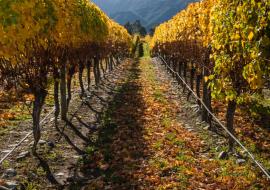
Post-harvest care - Hunter
Hunter-based Liz Riley generally experiences the earliest harvests in the country, so the key challenge is to manage growth, pests and even weeds up to 12 weeks before the vines go dormant. The objective is to ensure leaves stay in good condition generating carbohydrates for the following season without applying nutrition to the vineyards because of the growth issues.
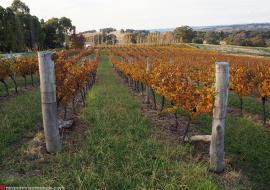
Post-harvest care - Orange
In Orange, Justin Jarrett deals with different climate and seasonal regimes so his approach is influenced by that, and the organic discipline applied to the vineyard. The approach to nutrition has changed significantly over the past 20 years, from a focus on nitrogen, phosphorus, and potassium levels to ensuring soil pH and soil carbon levels are right too. He says his management is about soil health monitoring, soil fungi and biological activity.
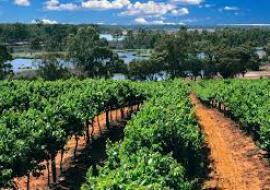
Post-harvest care - Riverland/Sunraysia
The warm climate regions of the Riverland and Sunraysia have a window of about 6 weeks between harvest and senescence. Sam Bowman’s focus during this time is on irrigation and nutrition to build carbohydrate stores in the plant. During the post-harvest period, the vines switch from moving carbohydrates into the ripening fruit to building reserves for the next season’s buds. Active management post-harvest is a crucial step in avoiding the trap of biennial bearing.
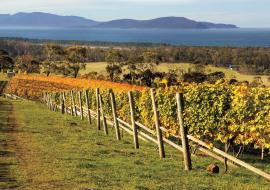
Post-harvest care - Tasmania
Tasmania-based cool climate viticulturist Ben Pietsch barely has time to take a deep breath between harvest and leaf fall. Some years there’s an interval of just two weeks so activities must be carefully planned. Ben moves fast post-harvest to replenish what’s been removed. Management is site specific but post-harvest vines must have access to water, nutrients and pests and diseases managed.

